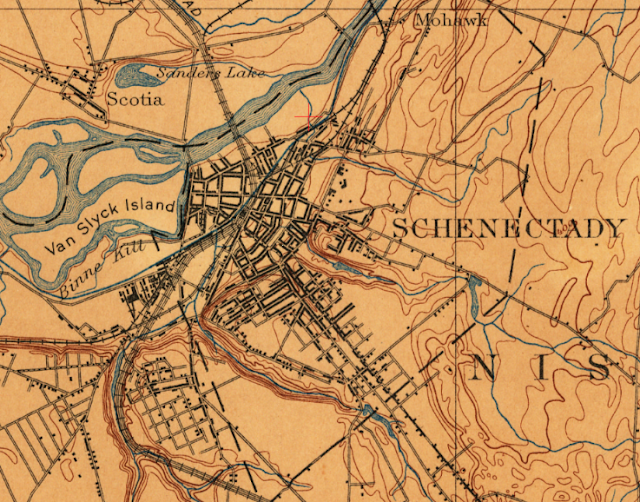 |
| NewYorkAlmanack (source), Courtesy of Schenectady County Historical Society "The sinuous structure, which had been hidden for decades within the boxy covering. revealed three sets of laminated arches — flexible timber “cables” — that were clearly seen in Burr’s original drawing." |
Theodore Burr was experimenting with different designs in the early 1800s. He didn't develope the arch-truss design that I associate with him until 1817. He had built a bridge here that used two 400' (122m) spans, but it came crashing down Feb 13, 1805. In 1808 he built a replacement that used four spans. It was essentially a suspension bridge that used laminated wood beams instead of metal tie-bars for the "cables." Originally, the piers at the bottom of the "cables" did not exist. They were added in 1835 because the suspension system was pulling apart. In 1874, this bridge was replaced by an iron truss bridge using the original piers. That bridge lasted until the 1930s. [NewYorkAlmanack]
Originally the bridge had just shingles on its "cables." By 1831, it had been enclosed.
 |
| NewYorkAlmanack, Courtesy of Ronald G. Knapp Collection |
 |
| 1893 Schenectady Quad @ 62,500 |
No comments:
Post a Comment